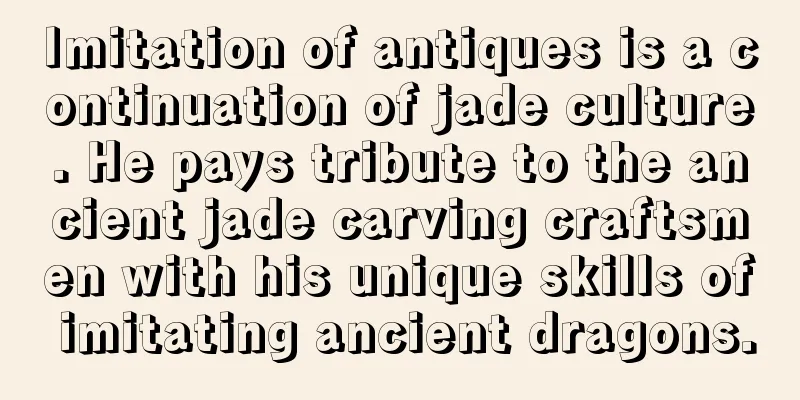They are all jade, so why are they divided into “old type” and “young type”?

|
The "type" of jade refers to its fineness, density, transparency and hardness. Well today I will talk about these four elements separately. In the past few days, many friends in my circle of friends have asked me privately, jade is made up of individual jadeite minerals, and the fineness, density and hardness of these jadeite crystals should be the same, so why should they be divided into "old type" and "young type"? Jadeite crystals have the same hardness, density and refractive index, but the situation is different for aggregates formed by a large number of jadeite crystals. After all, the crystals have different degrees of crystallization, sizes and shapes, and there are various characteristics between their bonding processes, which results in different physical properties of their aggregate as a whole. Therefore, the quality of jade depends on its fineness, density, transparency and hardness, rather than the physical properties of the crystals that make up the jade. Fineness. Fineness, as the name suggests, refers to the size and coarseness of the jadeite particles that make up jade. People in the industry call it "coarse flesh, fine flesh, or very fine flesh and very coarse flesh." Generally speaking, jade with coarse flesh is tender, while jade with fine flesh is old. To understand this fineness, we can compare the jadeite jadeite particles to millet and soybeans. When millets are piled together, what we see is a whole, but when soybeans are piled together, what we see is the soybeans and the spaces between them. If the average particle size (diameter) of jadeite particles is less than one millimeter and has a microcrystalline structure, the type of jade is relatively old, such as ice type and glass type. If the jadeite grains are large like beans and present a coarse crystal structure, this type of jade is relatively tender. Usually this type of jade is called "bean type". Bean type jade is also a common type of jade. fcgc66 fcpf18 |
<<: How are exquisite jade products processed? Don't make the process too complicated...
>>: Why are the jadeite sold in shopping malls usually very expensive?
Recommend
Simple and practical methods for daily identification of jadeite authenticity
1. Knock on the jade and listen to the sound. Tap...
What grade does the ice yellow jadeite belong to among the yellow jadeites? Understand immediately after reading
Some people would say that red, green, emerald an...
How are exquisite jade products processed? Don't make the process too complicated...
Glutinous full green landscape jadeite As the say...
Ignoring the advice, I spent 50,000 RMB on a fist-sized jadeite rough stone, and the finished product is stunning!
In the stone gambling world, many people like to ...
There are many types of jade Guanyin. See if you have chosen the right one?
In people's minds, Guanyin has always been a ...
How are jadeite mountains carved? How should we appreciate jadeite mountains?
Jade mountain is a kind of jade ornament for indo...
Types of genuine jadeite, how to choose and appreciate their prices!
How to select genuine jadeite types and appreciat...
What does A-grade jadeite mean? How to identify A-grade jadeite?
The concept of A-grade jadeite Many friends who h...
Such a connotative jade work can only be made by a jade carver with a story.
After being in the jade circle for a long time, t...
The jadeite raw stone looks like a "purple sweet potato", and the finished product is a violet egg-shaped surface!
Today I bring you a special piece of jadeite roug...
Jadeite identification certificate says it is A-grade, but it is not necessarily natural A-grade. Be careful of these notes
Many jade lovers have this habit. They must get a...
Flaws become highlights! Amazing jade carving creativity!
Defects are one of the problems that must be face...
How to choose a good jade pendant? Teach you to master four major skills!
Many people believe that wearing a jade jewelry w...
The comparison between dyed violet jadeite raw stone and real raw violet jadeite is very meaningful to learn
Today I will reveal to you the secrets of anti-co...
A jade bracelet worth 5 million was stolen while showing off wealth at the dinner table. How expensive is the jade you wear in your daily life?
Friends around me sometimes ask me, apart from ce...









